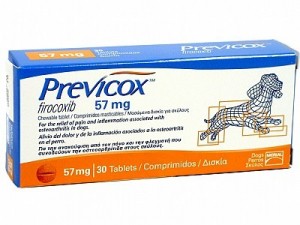Metacam is an NSAID used to suppress pain and inflammation caused by
dog arthritis. Its analgesic property comes from its ability to inhibit pro-inflammatory COX enzymes. Metacam, generic name Meloxicam, was first developed by Boehringer-Ingelheim and is available commercially in the form of a honey-flavored suspension contained in a squeeze bottle with a measuring dose syringe.
Giving Your Dog Metacam
Metacam can only be purchased with a veterinarian’s prescription. Just like any NSAID, Metacam can cause harmful side effects; hence, it is important for dog owners to use the drug carefully and follow the vet’s instructions closely.
Normally, the prescribed dosage for Metacam is 0.1 milligrams per pound of your dog’s weight for the first day. For the following days, the dose is decreased to 0.05 milligrams per pound of your dog’s weight. Metacam should only be given once a day.
For adult dogs, the NSAID can be given directly into the mouth. However, for dogs under six months, Metacam should be mixed in their food.
For proper storage, Metacam should be stored in room temperature, protected from light, moisture, and heat.
Metacam Safety Issues
Metacam inhibits the effects of COX enzymes. Regrettably, these enzymes are also important components of the protective lining of the stomach and upper intestine. In addition, they maintain the blood circulation in the kidneys. With this in mind, the use of the drug could potentially lead to the development of ulcers, intestinal bleeding, or kidney failure in sensitive individuals. Dog owners, therefore, should take note of the following symptoms:
-
Blood in vomit or dark-colored stool
-
Swelling
-
Rapid weight gain or loss
-
Inactivity or fatigue
-
Strange behavioral changes
-
Abdominal pain or tenderness
-
Jaundice
When you observe any of these symptoms, take your dog immediately to your vet so that the necessary treatment can be given to counter
Metacam’s side effects .
Another important issue that you and your vet should discuss is drug interactions. Inform your vet of any medications that you have recently given to your dog. The following is a short (incomplete) list of some of the drugs that should not be taken with Metacam:
-
Another NSAID
-
Corticosteroids
-
An over the counter cough, cold, allergy or pain medication
-
Furosemide
-
Warfarin
Lastly, there are certain dogs that should not be given Metacam, and these are dogs allergic to NSAIDs, dogs that have ulcers or pre-existing liver or kidney disease, dogs that have high blood pressure or are susceptible to heart disease and dogs with blood disorders.



 Previcox, generic name Firocoxib, is a non-steroidal anti-inflammatory drug used in the treatment of dog arthritis and post-operative pain. Previcox belongs to the COXIB class of NSAIDs, so its effects are limited to the pro-inflammatory COX-2 enzyme.
Previcox, generic name Firocoxib, is a non-steroidal anti-inflammatory drug used in the treatment of dog arthritis and post-operative pain. Previcox belongs to the COXIB class of NSAIDs, so its effects are limited to the pro-inflammatory COX-2 enzyme.